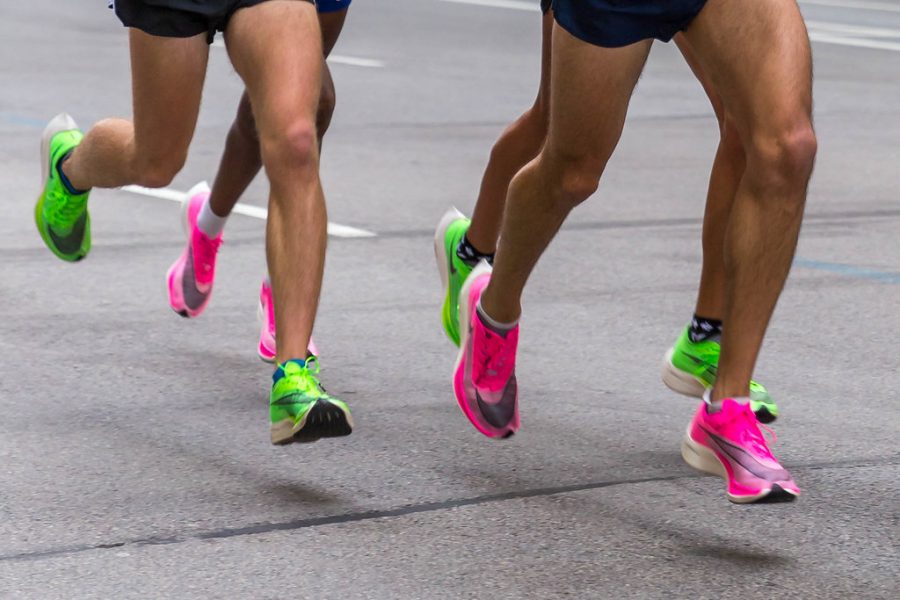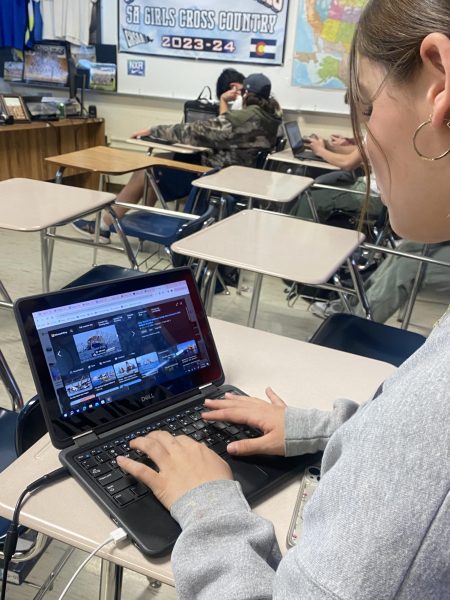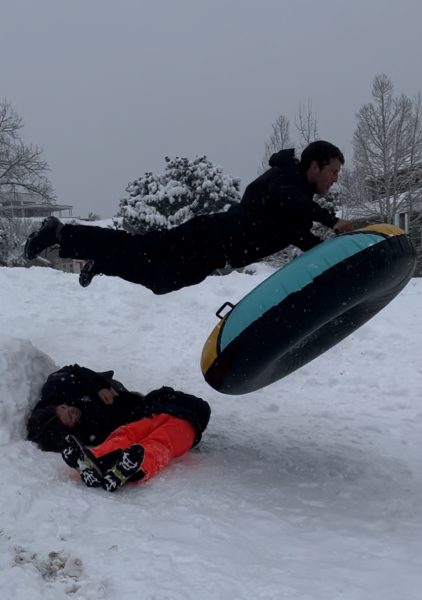The Wand And The Wizard: The Suit And The Swimmer: The Runner And The Shoe
In the months leading up to the 2008 Summer Olympics in Beijing, China, the world of swimming was changing rapidly. Longstanding records were being smashed constantly.
According to ABC News, there were 43 records beaten at a single world championship in Rome, Italy in 2009. The most decorated swimmer in history, Michael Phelps, broke seven world records and won eight gold medals in the 2008 Beijing Summer Olympics.
What was going on with swimming at the time?
Full body, half neoprene, half polyurethane “tech suits” reduced drag coefficients, reduced fatigue due to extreme compression and increased buoyancy, leading to dozens of records being broken in a short amount of time.
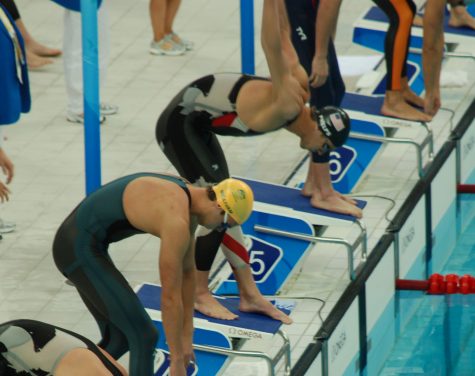
The world governing body of swimming, FINA, had to step in to introduce new regulations for the suit technology. USA Swimming banned the suits in 2009 and FINA banned the suits in 2010.
Currently, tech suits still exist and are widely used, but men’s suits can only be knee-length or “jammer” style and women’s suits can go over the shoulder (with straps) and down to the knees.
The suits are no longer made of polyurethane and neoprene but instead are made of textile fabrics. There is still an advantage to the suits but not nearly what the banned versions provided.
The reason for the banning of the famous full-body tech suits and leg suits was because the suit technology provided too much of an advantage and took away the integrity of the sport.
The swimming world’s distant cousin, the running world, has been facing a similar situation in recent times.
Nike introduced the Zoom Vaporfly 4% running shoe in 2016: a highly advanced, hyperlight, and springy racing shoe. The current iteration of that shoe is the Nike ZoomX Vaporfly Next%.
This shoe has a massive stack height of 40MM on the heel, a small amount of drop (8mm) and a carbon fiber plate embedded into the insanely responsive “ZoomX” foam.
The shoes weigh about seven point one ounces for a men’s size 10.5. For a strange comparison, two full decks of cards weigh about seven ounces.
Speaking from personal experience, the energy return on the Next% shoes is unreal. I only ran up and down my friend’s driveway with them on, and it felt like the effect of gravity was cut in half. My stride length increased and I was propelled forward. The shoes felt like they weighed nothing; in complete seriousness, the stack height pushed my standing height to about six feet. The feeling of wearing them is similar to the mind-boggling experience of holding aerogel (an opaque, super insulative material that is 98% air).
My words do not do the shoe justice. Runners World wrote of a similar experience to which I explained previously.
For years, the men’s marathon record had never been under a time of two hours. That changed on October 12, 2019, in Vienna, Austria, when Kenyan Olympic long-distance runner and marathoner, Eliud Kipchoge, ran a truly insane 1 hour 59 minutes and 40 seconds. On his feet were the Nike AlphaFly Next% prototype shoes. Not yet released to the public, only a few of the elite runners of the world at the time owned them.
“I am happy to inspire somebody,” he says. “And even if they say it’s not a world record, I have broken a barrier. Which makes a difference in human life, in a human family. That’s my evidence,” stated Kipchoge in Time Magazine’s interview.
Women have also been smashing records with Nike’s famous shoes. Incredible speed and improvement are gained from the shoe.
“Fellow Kenyan Brigid Kosgei amplified the VaporFly debate when she broke Paula Radcliffe’s marathon world record of 2:15:25, which had stood since 2003, by 81 seconds. Her 2:14:04 world record at the Chicago Marathon came just one day after Kipchoge became the first man to break the two-hour marathon barrier and gave the world a sneak peek at the next installation of the VaporFly tech,” stated Sports Illustrated.
Kokopelli Racing Team founder and coach, 1980 swimming Olympic trials qualifier, University of Michigan collegiate swimmer and cross country All-American alumni, 1985 Boston Marathon winner, two-time Chicago Marathon winner, 1990 Hakaido Japan Marathon winner, and 1993 Twin Cities Marathon winner, Lisa Rainsberger (formerly Lisa Weidenbach) had some enlightening input on the topic of Nike’s groundbreaking shoe.
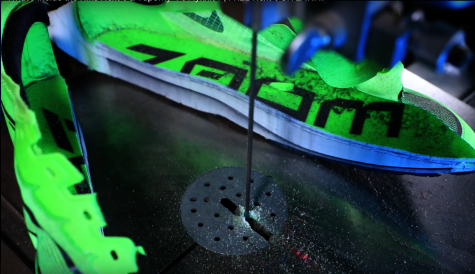
“It used to take years to break a record but now the record book has basically been rewritten in a matter of a few short years. The shoe has weakened the sport. Now it’s more ‘yawn, another record just got broken,’ instead of it being a huge deal like it used to be. Just in 2020, nine Americans broke 2 hours 10 minutes in the marathon; before that, one American, if that, per year would break 2:10. It almost is disrespectful to former athletes who spent years and years of training to break a record. Due to the Nike Next% running has become less about the art of running and more of an arms race for shoe companies. Don’t even get me started on the injuries they can cause,” firmly stated Rainsberger.
The shoes and Nike’s limit-pushing technology receive a complete mixed bag of emotions from the running community. Most younger runners have a positive or neutral stance on the shoes and their technology, but most seasoned and more serious runners feel quite the opposite.
Banning the shoes would leave many of the records, and the record-breakers in a grey area of the record book; so, imposing restrictions is likely the best course of action for the sport.
Starting April 30 of 2020, World Athletics made changes to the rules for running shoes in competition. In short, the stack height of the shoe must not be more than 40mm, and only one carbon fiber plate is allowed. This, however, still allows for the “arms race for shoe companies” as Rainsberger put it.
The Nike Vaporfly Next% still fits under those restrictions that World Athletics put in place. Thus, the shoe can and likely will be worn in the upcoming 2021 Tokyo Summer Olympic games.
I myself have contemplated purchasing Nike’s advanced shoes, but in the long-distance, spiked, track-oriented version, the Nike ZoomX Dragonfly, not to be confused with the short/mid-distance Nike Air Zoom Victory.
I am hesitant to drop $150 on track spikes when my training shoes typically retail for around 30 dollars more, and a good pair of cross country spikes are around $30-40 dollars. That is in addition to the unknown effects of the spike injury-wise, and the fact that the next chapter of my running career may dictate which shoes and gear I can wear anyway.
Above all, I am hesitant to be associated with a shoe that may be banned, restricted, or put in the grey area of competition. I am all for the integrity of the sport. Although I will admit, I am simultaneously intrigued by the technological advancements of game-changing running shoes.
For now, I’ll stick to traditional spikes and hope I’m not just behind the times that are indeed changing.
Only time will tell what will become of racing shoes in the running world. Perhaps runners will remember the days of gravity and time-defying Nike shoes, much like swimmers look back on the days of full-body record-smashing tech suits.

Howdy!! I'm Alex Maline, and this will be my second year on the Jetstream. This time around I am an editor and I'm excited to see how this year turns out!...



